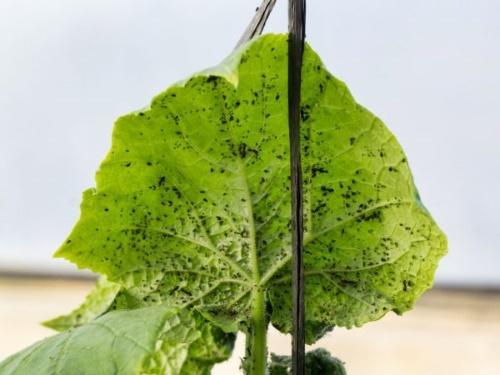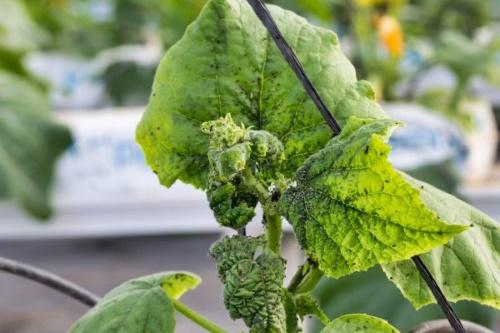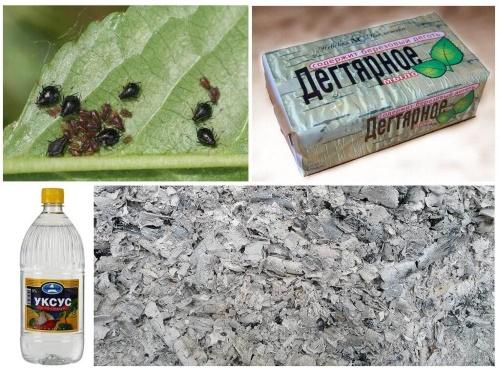Black aphid on cucumbers: how to detect and how to get rid of
 Pests cause significant harm to all crops, and cucumbers also suffer from them. For example, black aphids on cucumbers and by themselves can lead to the complete death of crops. In addition, she carries viral diseases, which only exacerbates the situation. And given the fact that insects move quickly and are distinguished by increased fertility, measures must be taken urgently. Otherwise, the pest will soon become a full-fledged owner in your beds, be it a greenhouse or a vegetable garden.
Pests cause significant harm to all crops, and cucumbers also suffer from them. For example, black aphids on cucumbers and by themselves can lead to the complete death of crops. In addition, she carries viral diseases, which only exacerbates the situation. And given the fact that insects move quickly and are distinguished by increased fertility, measures must be taken urgently. Otherwise, the pest will soon become a full-fledged owner in your beds, be it a greenhouse or a vegetable garden.
How to understand that plants are attacked by aphids

- small holes appeared on the leaves, and they themselves began to curl to the bottom and dry out;
- internodes are shorter;
- the overall growth of the bushes has slowed down;
- decreased fruiting;
- the tops of the shoots were deformed.
The black aphid has a black body, and there are also green or yellow insects. Regardless of the color, you can fight them using general methods.
Black aphid on cucumbers: folk ways to combat the pest
 Many gardeners prefer not to use chemistry in their beds, so as not to "poison" the fruits. If there are not very many insects yet or when the cucumbers have begun to bear fruit, such folk remedies will help:
Many gardeners prefer not to use chemistry in their beds, so as not to "poison" the fruits. If there are not very many insects yet or when the cucumbers have begun to bear fruit, such folk remedies will help:
- Herbal infusions. Aphids do not like the aroma of celandine, dandelions, yarrow, onions, garlic, horseradish, tomato tops and potatoes.
- Infusion of red hot pepper (2-3 pcs.) With the addition of a couple of drops of iodine and 0.5 tbsp. ash.
- Mustard powder solution (100 g per bucket of water). To make it stick better to the leaves, you need to add soap and a little sunflower oil.
- Spraying cucumbers with soda solution.
- Diluted ammonia (50 ml per 10 liters of water).
- Soap solution.
It is necessary to spray cucumbers on both sides of the leaves. It will take several treatments, and it is better to use a new product each time so that the aphid does not get used to it.
Harmless biological agents against aphids
 If there are already too many pests or there is no time to tinker with the preparation of tinctures, biological fungicides will help:
If there are already too many pests or there is no time to tinker with the preparation of tinctures, biological fungicides will help:
-
- Aktofit;
- Bitoxibacillin;
- Biotlin;
- Fitoverm.
After treatment with biofungicides, wait at least 5 days so that the cucumbers can be consumed.
"Serious" remedies: chemicals
 Fungicides of chemical origin are the most effective against aphids. However, at the fruiting stage, they should not be used, because within a month after processing, cucumbers are not suitable for food. But for seedlings of plants or in the first half of the growing season of culture, this is a good tool. Such drugs as Aktara, Akarin have proven themselves quite well; Fufanon, Inta-Vir.
Fungicides of chemical origin are the most effective against aphids. However, at the fruiting stage, they should not be used, because within a month after processing, cucumbers are not suitable for food. But for seedlings of plants or in the first half of the growing season of culture, this is a good tool. Such drugs as Aktara, Akarin have proven themselves quite well; Fufanon, Inta-Vir.